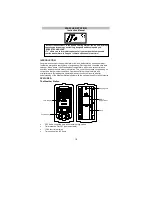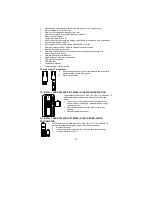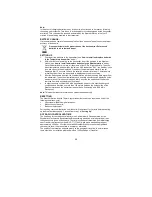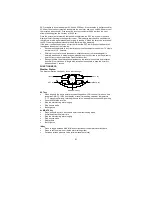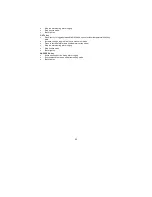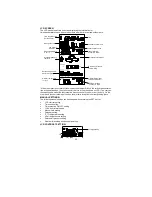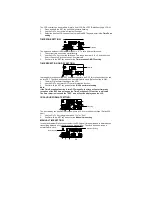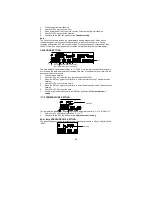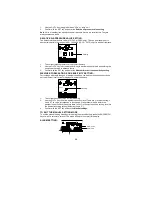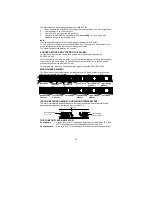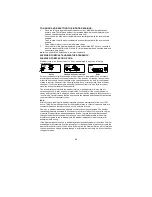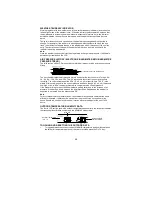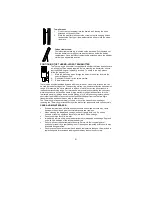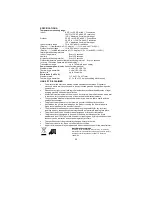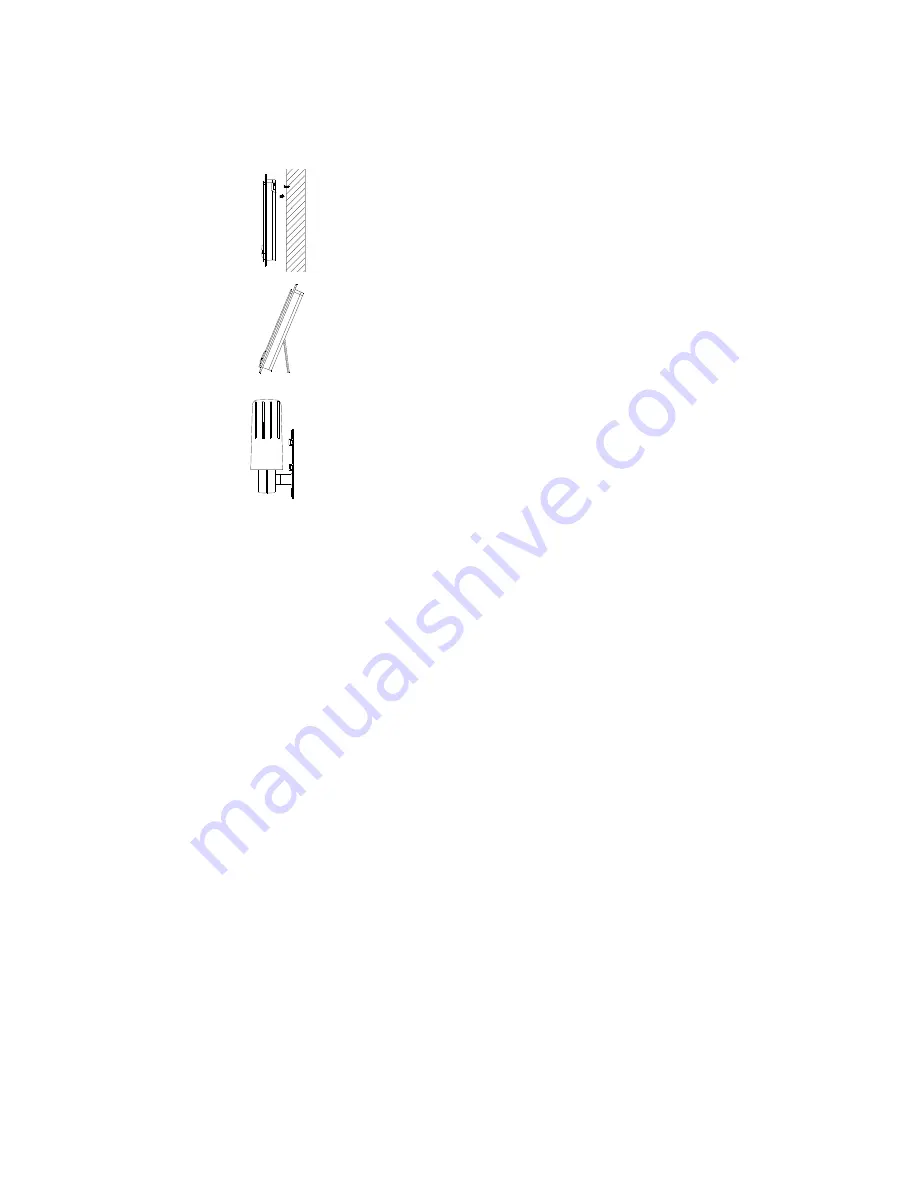
31
To wall mount:
1.
Fix a screw (not supplied) into the desired wall, leaving the head
extended out by about 5mm.
2.
Place the weather station onto the screw, using the hanging hole on
the backside. Gently pull the weather station down to lock the screw
into place.
Foldout table stand:
The foldout table stand leg is located on the backside. Pull the stand out
from the bottom center edge of the weather station, below the battery
compartment. Once the foldout table stand is extended, place the weather
station in an appropriate location.
POSITIONING THE THERMO-HYGRO TRANSMITTER
The Thermo-hygro transmitter is supplied with a holder that may be attached to
a wall with the three screws supplied. Before securing the transmitter, ensure
that the 868MHz signal is properly received. To attach to the wall, please
follow the steps below:
1.
Mark the wall using a pen through the holes in the holder to obtain the
exact drilling position.
2.
Drill holes in the wall at the points marked.
3.
Screw holder onto wall.
There is also double sided tape included with the wall mount. On smooth surfaces this can
be used instead of drilling holes. The mounting surface can, however, affect the transmission
range. If for example the unit is attached to a piece of metal, it may then either reduce or
increase the transmitting range. For this reason, we recommend not placing the unit on any
metal surfaces or in any position where a large metal or highly polished surface is in the
immediate proximity (garage doors, double glazing, etc.). Before securing in place, please
ensure that the Weather station can receive the 868MHz signal from the Thermo-hygro
transmitter at the positions that you wish to situate them.
The Thermo-hygro transmitter simply clicks in or out of the holder. When inserting or
removing the Thermo-hygro transmitter from the wall holder please hold both units securely.
CARE AND MAINTENANCE:
•
Extreme temperatures, vibration and shock should be avoided as these may cause
damage to the units and give inaccurate forecasts and readings.
•
When cleaning the display and casings, use a soft damp cloth only. Do not use
solvents or scouring agents as they may mark the LCD and casings.
•
Do not submerge the units in water.
•
Immediately remove all low powered batteries to avoid leakage and damage. Replace
only with new batteries of the recommended type.
•
Do not make any repair attempts to the units. Return it to their original point of
purchase for repair by a qualified engineer. Opening and tampering with the units may
invalidate their guarantee.
•
Do not expose the units to extreme and sudden temperature changes, this may lead to
rapid changes in forecasts and readings and thereby reduce their accuracy.

